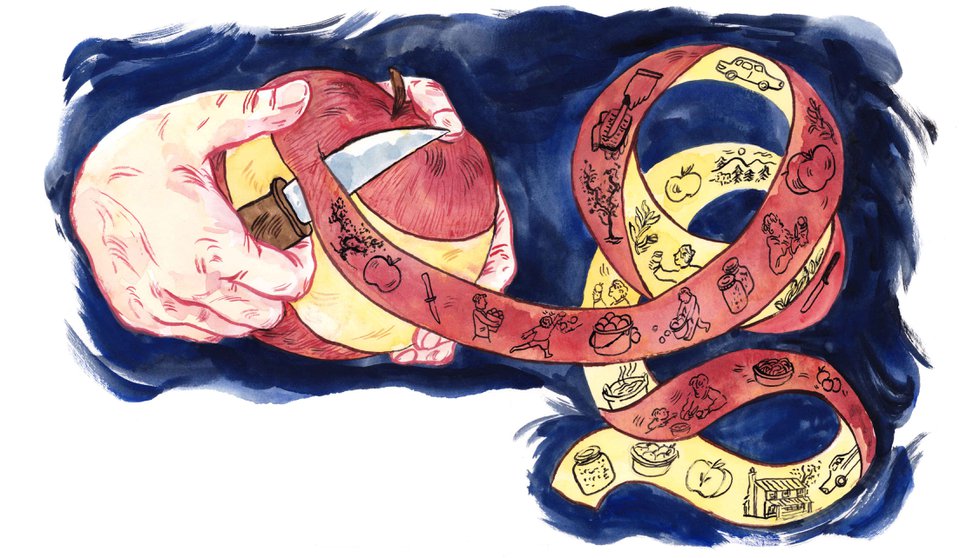Preventing cardiovascular disease: The simple challenge of saving your life.

Suppose you were headed straight for a cliff. Surely you’d want to stop before you went over the edge? Or would you just hope that the fall wouldn’t kill you before you hit the ground?
The cliff is cardiovascular disease. It’s the leading cause of death in the U.S. for men and women alike, killing more people every year than all forms of cancer combined. And the deadliest—and the most common—form of cardiovascular disease is coronary artery disease (CAD), responsible each year for the deaths of more than 370,000 people in the U.S.
Coronary artery disease results from a condition known as atherosclerosis, a narrowing and hardening of the arteries that is the result of plaque buildup within the artery walls. As atherosclerosis progresses, blood flow to the heart is restricted, which can weaken and damage the heart, putting you at risk for heart failure or for a potentially fatal, sudden heart-rhythm malfunction. But for many people, the first sign of advanced atherosclerosis is an abrupt, complete blockage of an artery, cutting off blood flow to the heart: a heart attack. Every year, more than half a million people in the U.S. suffer their first heart attack.
The development of coronary artery disease is a complex process, and one that is broadly, but far from fully, understood. What is believed is that any one person’s chance of developing CAD is predicated upon a set of risk factors that both individually and cumulatively increase your odds of cashing in on a lottery nobody wants to win. The risk factors that seem to have the most well-established association with heart disease are: excess weight, smoking, an unhealthy diet, a sedentary lifestyle, elevated blood pressure, high blood sugar or diabetes, and high cholesterol along with age, sex (men have a greater lifetime risk), and a family history of heart disease.
Yet causation is not always clear: about half of heart attacks, for example, happen to people with “normal” cholesterol levels, and Hispanic-Americans, despite higher apparent incidence of risk factors, seem to have a lower incidence of CAD. Other possible associations are the subject of continuing investigation: Do microbes in our gut play a role? Are added sugars the true dietary culprit? What possible roles do stress, sleep deprivation, loneliness, income, education—and even geographical distribution—play?
Still more factors are only now coming into focus with new advances in research capabilities in fields like genetics and immune-system functioning, and large-scale data-crunching that can tease out associations once too subtle to identify. Every new advance in understanding suggests how much more is yet to be understood.
But here’s the truly startling statistic: It’s estimated that up to 90 percent of coronary artery disease is potentially preventable.
Preventable.
Most of the risk factors that line us up for CAD are significantly influenced by lifestyle, particularly diet and physical activity. We’re spending more than $45 billion a year on direct medical costs for coronary artery disease. In theory, most of that might be saved with changed eating habits and a pair of comfortable shoes.
That’s Richmond physician Randy Baggesen’s argument. The analogy about heading for a cliff is his, and he expresses a frank outrage at our healthcare system, which does nothing to keep people from going over the edge, stepping in only “after they have fallen off the cliff,” he says. “All of the strategies we use in modern medicine are backwards. We don’t do anything, something bad happens, and then we do everything.” The Centers for Disease Control agree: “Our health care system is not designed to prevent chronic illnesses,” the agency noted in a 2009 publication on chronic disease and prevention.
Baggesen’s concierge medical practice takes an aggressive approach to addressing cardiovascular disease risk in patients, with exhaustive evaluations that look at everything from clotting genetics to sleep patterns. But fundamentally, he focuses on prevention, which, he argues, comes down to two things: a healthy diet and daily exercise. “If people adopted just those two practices, it would make a huge difference,” he says.
So simple. And yet, the challenge to that prescription lies in the very nature of CAD. It develops, symptomless, over decades. Research suggests that childhood isn’t too soon to start prevention if you want to avoid a heart attack in retirement. But when health and nutrition advice changes or conflicts (remember when margarine was supposed to be good for you? remember when eggs were bad?), when our understanding of heart disease keeps evolving, and when daily decisions add up only over years, how many people can keep their eye on the ball across a lifetime?
Dr. Angela Taylor, an interventional cardiologist and an associate professor of cardiovascular medicine at the University of Virginia, acknowledges that challenge; with more than 80 percent of American adults failing to get recommended amounts of exercise, she says the focus should be on small changes that make a meaningful difference: “If you start with a goal that is too big, most people will fail to get there. We want to create a lifestyle that is doable, livable, and something that people can do for the long haul.” A moderate, balanced diet that avoids added sugar, trans fats, and processed food (“If your grandmother wouldn’t recognize the ingredient, don’t eat it,” says Taylor) and engaging in 30 minutes of moderate activity daily, like a fast walk, are strategies from which almost everyone could benefit.
Are such incremental steps likely to get us to that 90 percent prevention? Unlikely. But at least we’d all be headed in the right direction.
Because in the end, says Taylor, the best thing you can do for your heart is to do something, now. “The earlier you can begin, the better, but wherever you are, begin.”
For more information from the American Heart Association about maintaining a healthy lifestyle and preventing cardiovascular disease, go to Heart.org








